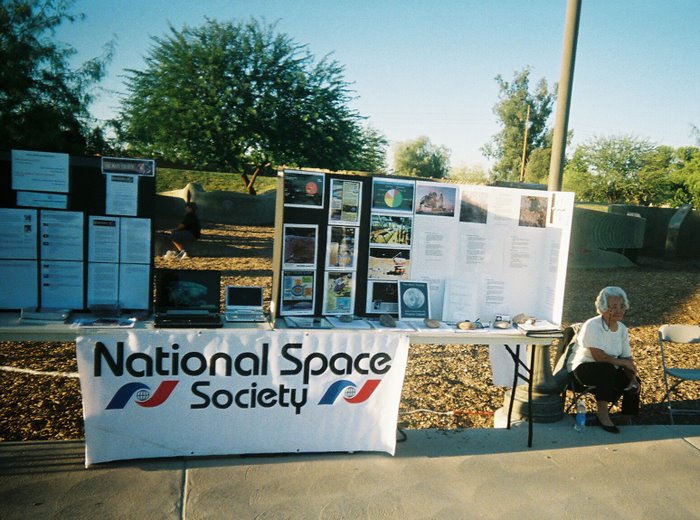As the Lunar Orbital Station is developed it can also be used by the Tourism Business as a Near Lunar Hotel and later as a way station for the transfer of Tourists to the Lunar Surface to accommodations designed for them at the Lunar Stations.
As material is returned from the Moon Base it can be used to increase the capability and capacity of the International Space Station and/or can be used to increase the Commercial Station for specific use to expedite the moving on to the Planets and Asteroids as well as its use as a Tourist Hotel and way point.
Every thing learned in the building of the Lunar Settlement Stations should be directly applicable to the building of other Stations in the planetary system. New Stations may actually be built faster and more economically than the initial “Lunar Settlement Station” when the experience gained in building the first “Lunar Settlement Station” is utilized. This experience will extend to both the “Construction Shack” and the “Initial Permanent Station” and its Support Services.
In every case, the “Construction Shack” should go together quickly and easily with all of its electronics, power and plumbing for a “plug it in and run it” set up. All of the basic systems should be included twice in the equipment roster, along with all of the equipment to put the “Construction Shack” together initially. This should include Solar Cell and/or Fuel Cell powered construction equipment to build or assemble the “Construction Shack” and then cover it for protection from the Sun, Solar Storms and ambient radiation using the Regolith of the Moon’s surface. This same equipment can then be used to build the “Lunar Settlement Station” as the equipment to put the Station together becomes available.
Many examples of “Lunar Surface Stations” have been suggested over the years and some of them will probably be built. However the smaller, more efficient initial Stations will be the ones considered with their expansion based on their success. In time the “Lunar Settlement Station” and additional “Specialized Lunar Surface Stations” can become a manufacturing Mecca for producing Space Built Systems, mechanical components, electronics systems and New Drugs for the fight against disease. The manufacturing of items for use in Space and on the other bodies of the Solar System would be a prime reason for the Lunar Station to continue to grow in size and importance. When this happens then or even before that the development of a Lunar Surface Transportation System will have to be considered. On method for this will be discussed later in the Section Lunar Transportation systems.

Special Local Space Events:
=======================================
LepreCon39
Further Information when available.
See http://www.leprecon.org/
=======================================
TELEPRECENSE REMOTE CONTROL RACES
(Still on going planning for Races.)
The Moon Society Phoenix is still working on the Teleprecense Remote Control races.
Check this blog for details as they develop.
We are still discussing set-ups, rules, equipment and sponsorship rules at this time and it appears that the races wont occur until sometime in the late winter or early spring.
All races will be open to all comers, however, judging maybe bases on age and type (cost) of RV Car. If you prefer to buy your own car and practice for the races, then you will need a three (3) channel RC Car that can be purchased at Walmart, Target or another store. You will need a minature TV camera, a transmitter, a receiver and a device to display the picture from the Car so that you can practice driving the Car by use of the TV System only.
In the talking stages are basic racing, advanced races, and the Lunar Challenge, race heats may be run against the clock and/or one on one or more.
If you have comments and suggestions please make your comments to this blog or send them to me at portercd@msn.com Subject RC Racing.
Demonstrations of the Race Cars will be available at CopperCon32 at the Moon Society Outreach Table.
Craig
=======================================
LepreCon39
Further Information when available.
See http://www.leprecon.org/
=======================================
TELEPRECENSE REMOTE CONTROL RACES
(Still on going planning for Races.)
The Moon Society Phoenix is still working on the Teleprecense Remote Control races.
Check this blog for details as they develop.
We are still discussing set-ups, rules, equipment and sponsorship rules at this time and it appears that the races wont occur until sometime in the late winter or early spring.
All races will be open to all comers, however, judging maybe bases on age and type (cost) of RV Car. If you prefer to buy your own car and practice for the races, then you will need a three (3) channel RC Car that can be purchased at Walmart, Target or another store. You will need a minature TV camera, a transmitter, a receiver and a device to display the picture from the Car so that you can practice driving the Car by use of the TV System only.
In the talking stages are basic racing, advanced races, and the Lunar Challenge, race heats may be run against the clock and/or one on one or more.
If you have comments and suggestions please make your comments to this blog or send them to me at portercd@msn.com Subject RC Racing.
Demonstrations of the Race Cars will be available at CopperCon32 at the Moon Society Outreach Table.
Craig
=======================================
Sunday, June 10, 2007
Subscribe to:
Post Comments (Atom)



No comments:
Post a Comment